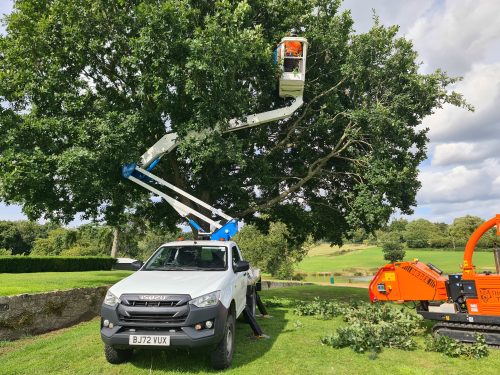 https://www.wilsontreesurgery.com/wp-content/uploads/2024/09/20230807_162313-500x375.jpg
https://www.wilsontreesurgery.com/wp-content/uploads/2024/09/20230807_162313-500x375.jpg
Machinery used in utility arboriculture
Read more
by Wilson Tree Surgery |
As we navigate the changing seasons, it’s crucial to stay informed about the various pests that pose significant risks to our environment, health, and industry. From aggressive Asian hornets to the irritating oak processionary moth, here’s a comprehensive update on the current pest threats and how to mitigate their impact.
Since 2004, Asian hornets have steadily spread across Europe, now covering France, Portugal, northern Spain, and more recently, Holland, Belgium, and Germany. These hornets are highly aggressive predators of native insects and pose a significant threat to pollinators, including honey bees.
In 2023, Britain saw a dramatic increase in Asian hornet nests, with 78 nests destroyed, marking a sevenfold increase from previous years. The Island of Jersey reported 338 nests, with nearly half found in trees, some at heights exceeding 10 meters, making them difficult to spot and more hazardous for tree climbers and workers.
Precautions and Advice:
The brown-tail moth, native to the UK, has seen a significant increase in numbers. The caterpillars of this moth are notorious for their irritating hairs, which can cause painful rashes and, in rare cases, respiratory problems.
These caterpillars are commonly found on hedgerows and various plants, especially those in the Rosaceae family, such as hawthorn and blackthorn. The highest risk period is from April to late summer when the caterpillars are most active and visible.
Precautions and Advice:
The oak processionary moth poses a significant health risk due to its caterpillars, which have toxic hairs that can cause skin irritation, rashes, and respiratory issues. Found mainly on oak trees, these caterpillars move in distinctive nose-to-tail processions, making them easier to identify.
The moths are currently present in several regions and are subject to control measures to prevent their spread.
Precautions and Advice:
The Forestry Commission has confirmed the presence of the larger eight-toothed spruce bark beetle in several counties, including Norfolk, Suffolk, and Kent. This beetle poses a severe threat to spruce trees and can cause extensive damage.
New Regulations:
Precautions and Advice:
The increasing numbers and spread of these pests highlight the importance of vigilance and proactive measures. By staying informed and following recommended guidelines, we can mitigate the impact of these pests on our environment and health. Whether you’re working in arboriculture, landscaping, or simply enjoying outdoor spaces, being aware of these risks and prepared to respond appropriately is crucial.
For further information and to report sightings, you can use the following resources:
Stay safe and vigilant out there!
 https://www.wilsontreesurgery.com/wp-content/uploads/2024/09/20230807_162313-500x375.jpg
https://www.wilsontreesurgery.com/wp-content/uploads/2024/09/20230807_162313-500x375.jpg
Read more
 https://www.wilsontreesurgery.com/wp-content/uploads/2024/09/AdobeStock_475873508-500x333.jpeg
https://www.wilsontreesurgery.com/wp-content/uploads/2024/09/AdobeStock_475873508-500x333.jpeg
Read more
 https://www.wilsontreesurgery.com/wp-content/uploads/2024/09/pexels-valiphotos-589802-500x333.jpg
https://www.wilsontreesurgery.com/wp-content/uploads/2024/09/pexels-valiphotos-589802-500x333.jpg
Read more